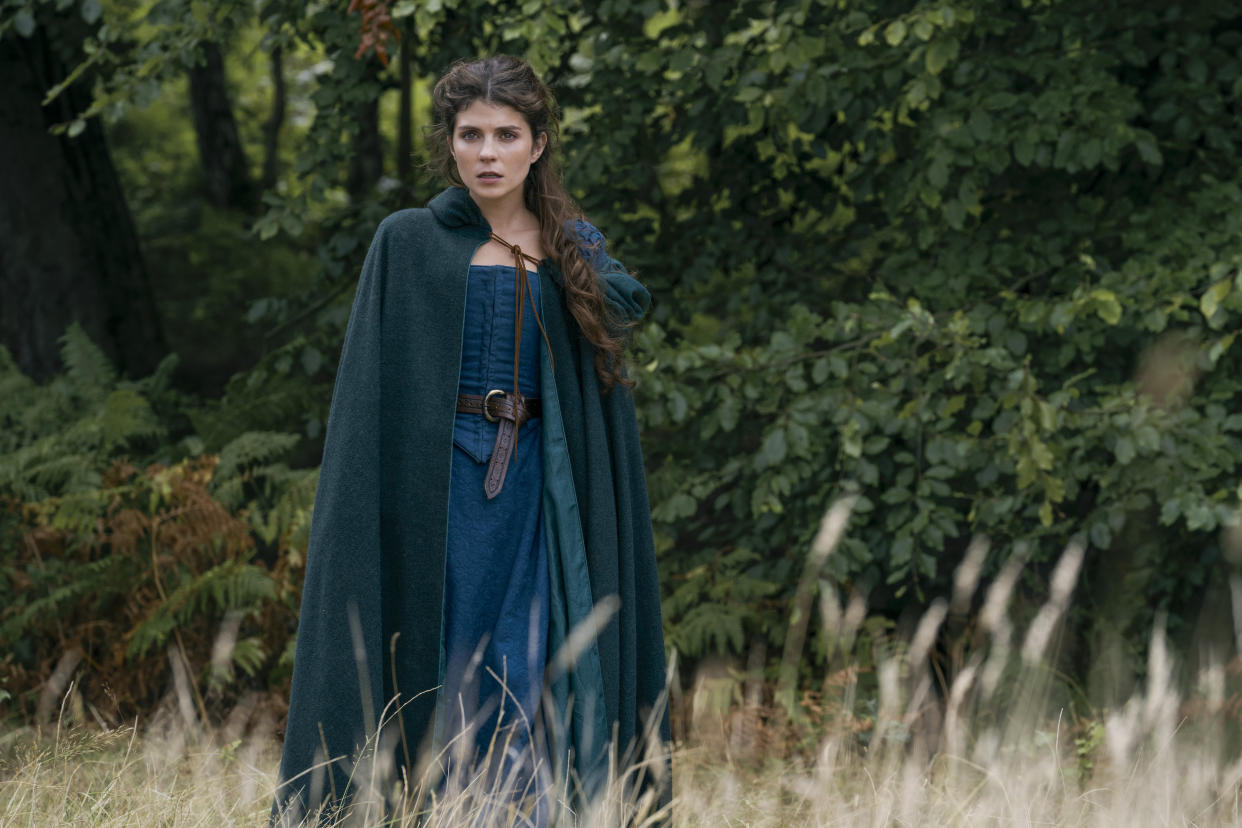The Real History Behind 'My Lady Jane'

Emily Bader as Lady Jane Grey in the Prime Video series 'My Lady Jane' Credit - Jonathan Prime—Prime Video
Often called England’s first queen, Lady Jane Grey only reigned for nine days in 1553 at the age of 16. It was rocky from start to finish: When she took the throne, the country was fiercely divided between Protestants and Catholics.
A new historical fantasy series, My Lady Jane, premiering June 27 on Prime Video, imagines if those divisions were between regular humans—known as verities—and Ethians, humans who can turn into animals and are viewed as the lowest caste in their society. Lady Jane Grey (Emily Bader) frantically spends her short reign trying to promote unity, urging respect for Ethians, especially because her husband Guilford Dudley (Edward Bluemel) is an Ethian who can change into a horse.
TIME talked to two Lady Jane Grey biographers, Nicola Tallis and Leanda de Lisle, about what to know about the real Lady Jane who inspired the show.
Who is Lady Jane Grey?
A great niece of Henry VIII, she was born in Bradgate, Leicestershire, England, in 1537.
In the show, she’s depicted as an extremely intellectually curious teenager, always reading up on medicinal uses for herbs for a textbook she wants to write. This is why Guilford wants to marry her—he hopes she can find a cure that will stop him from turning into a horse at unexpected times.
The real Jane did love reading books, but was more passionate about languages and theology than science. She spoke several languages, including Arabic and Hebrew and relished exchanging letters with other educated people. “She was really, really academic,” says Tallis.
Lady Jane Grey’s real love life
My Lady Jane depicts her as fiercely independent, and hell bent on never getting married. In the show, Jane is married off to English nobleman Guilford Dudley against her will. But the show implies they fall in love, depicting Jane and Dudley experiencing an instant attraction when they meet. Biographers say their real marriage was far from a real love story.
“We know Jane didn't really want to be married to him,” says Tallis, author of Crown of Blood: The Deadly Inheritance of Lady Jane Grey.
In the show, Jane’s mother Lady Frances Grey (Anna Chancellor) plans the marriage with Dudley’s father, the Duke of Northumberland, to ensure her family will not have to worry about money again. But according to Tallis, “there is a source that says that her mother was also really, really against this marriage to Guilford Dudley. And I think that that's probably quite true.”
The Duke of Northumberland was pushing the marriage from the get-go. As one of the King’s chief politicians, he persuaded a dying Edward VI to name Jane his heir in this will so that when she rose to the throne, his son would be King. It is true, as the show depicts, that there was a rumor that the Duke of Northumberland (Rob Brydon) poisoned the king to hasten his son’s ascent to the throne.
De Lisle argues that Edward VI was a bit of a “misogynist” in that he wanted a married woman to be queen so that a man would at least be doing some of the work of ruling. As she explains Edward VI’s thinking back then, “Jane has a husband and her husband will basically be a king. That's Edward’s view. [His] sister Mary is not married.”
What to know about Lady Jane Grey’s reign
The real Edward VI died of some kind of pulmonary infection like tuberculosis on July 6, 1553. In the show, his sister Mary is in on a plot to slowly poison him so she can get to the throne faster, but that plot line is purely fictional.
In real life, Edward VI wanted Jane to be his heir because he wanted a Protestant successor, and his elder half sister Mary had become a staunch Catholic.

Mary was not “Mrs. Popular with the powers that be because she was a Catholic,” de Lisle explains. “England was a Catholic country. Protestantism was largely being imposed by the king and by the elites.”
But during Jane’s reign, it was discovered that his will was not legal because it had not been passed by Parliament. That meant Mary was next in line, legally, so that’s why Jane was overthrown after nine days. Mary assumed the throne on July 19, 1553.
Mary was more popular among the general public than Jane in general because she was a daughter of Henry VIII and raised in the court. “Lots of people are fearful of the idea of a woman bearing power and particularly one who they don't know,” says Tallis.
When Jane started speaking out against all of Mary’s Catholic reforms, describing taking communion in a Catholic mass as a satanic form of cannibalism. On top of that, her family started organizing a campaign to depose Mary. While Mary never wanted to execute Jane in the first place, she felt like she had no choice. Mary saw Jane as “a potential lightning rod for a rebellion,” as de Lisle puts it.
Jane and Guilford Dudley were both executed on February 12, 1554.
Write to Olivia B. Waxman at olivia.waxman@time.com.

 Yahoo News
Yahoo News 
